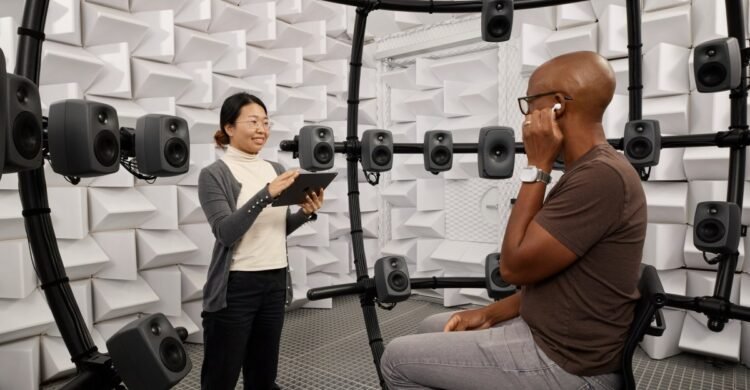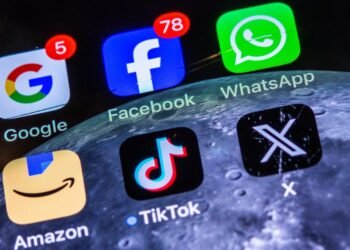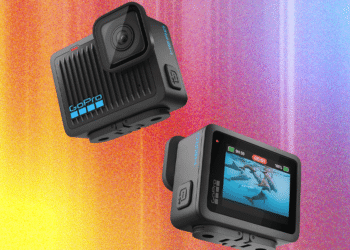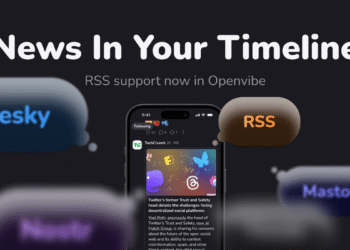As a person firmly ensconced in middle age — 57 percent of the way through life, to be precise, if government actuarial tables hold — I have begun to notice certain things not working quite as well as they used to. Specifically, my eyes and my ears.
You can ask my family: My hearing is not what it once was, and not just because I have been known to hear selectively from time to time. As for my eyes, I had them zapped with lasers back in 2005, but the increasing squint as I read tells me the warranty may have expired on that. And I’m not alone — about 14 percent of Americans between 45 and 64 experience hearing loss in some way, while over 90 percent of those over 45 suffer from presbyopia, or the declining ability to focus on near objects. Globally, the World Health Organization projects that by 2050 nearly 2.5 billion people will have some form of hearing loss.
But I have good news for fellow aging people (which is, well, all of us eventually.) Our digital gadgets are increasingly being designed with features that can help users overcome both the usual sensory declines of age and more severe disabilities and diseases. From Apple AirPods that can act as inexpensive hearing aids — and now, on-the-go translators — to the growing ubiquity of continuous glucose monitors for diabetics, some of the most promising uses of consumer tech involve propping up our failing organic meat-sacks.
The biggest consumer tech nudge from “nice to have” toward “health tool” happened last year: the US Food and Drug Administration authorized the first over-the-counter hearing-aid software. It’s called “Hearing Aid Feature,” and it allows adults with mild to moderate hearing loss to use compatible AirPods as OTC hearing aids. Given that even over-the-counter hearing aids can run from several hundred dollars to over $1,000, a roughly $200 pair of AirPod Pro 2s can feel like a bargain. For more complex hearing loss, the audiologist still matters, but the FDA’s endorsement lowers stigma and price barriers for millions who won’t (or can’t) get clinical devices.
And those same buds now speak multiple languages. Apple’s new Live Translation, part of this fall’s “Apple Intelligence” rollout, pipes two-way conversation translation straight through your AirPods when paired to an iPhone. In demos and early reviews it’s already proven good enough for everyday use, translating in English, French, German, Portuguese and Spanish, with more languages promised. For anyone who’s ever tried to navigate a medical form, a parent-teacher conference, or a pharmacy pickup in a second language, this is less a party trick and more a social ramp.
Public places are catching up, too. Auracast — Bluetooth’s broadcast audio standard — turns loud, crowded public venues into accessible listening zones. Instead of borrowing sticky headsets at a theater, you can join a labeled audio stream with your own earbuds or hearing aids. Google has baked Auracast support into Android 16, and Pixel phones are starting to make “join broadcast” feel as normal as hopping on wifi. That’s dignity, not just decibels.
Our eyes are, if anything, almost as bad as our ears: at least 2.2 billion people around the world have some form of vision impairment. And our addiction to digital devices is actively making that worse: Studies have found that a daily 1-hour increment of digital screen time is associated with 21 percent higher odds of myopia, or nearsightedness.
But if phones are the cause of at least some of our vision problems, they have added features that can help people with vision impairment navigate the world. On the iPhone, the built-in Magnifier app harnesses the device’s camera to do some beautifully practical things; Door Detection announces a door’s distance and how it opens; Point and Speak reads the labels on physical buttons when you aim your finger, decoding all too often inscrutable kiosks. And while automatic translation requires iPhones advanced (and expensive) enough to use Apple Intelligence, these are stock features, not add-ons.
Over on Android, Google’s Lookout app now goes beyond “what’s in this picture?” to truly useful follow-ups for the vision impaired. Image Q&A lets you ask for details about an image and get spoken, more helpful answers, and Google says those descriptions are now powered by its newer Gemini AI models. That translates to daily autonomy: “Is this the blue shirt?” “What does the sign say?” “Where’s the submit button?”
The consumer-to-care transition is happening in chronic disease, too. Continuous glucose monitors — medical implants that track glucose levels — have been available for diagnosed diabetics for some time. But in 2024, the FDA cleared the first over-the-counter continuous glucose monitor, Dexcom’s Stelo, for adults who don’t use insulin (which includes diabetics who control their illness with oral medication and people who may be pre-diabetic). A few months later, the medical devices company Abbott won clearance for two over-the-counter sensors: Libre Rio (specifically for adults with type 2 diabetes not using insulin) and Lingo (which is aimed more at the wellness crowd).
No prescription needed; just a phone and a sensor. For the 38 million Americans with diabetes — and the much larger group with pre-diabetes — that makes it simple to see how breakfast or a walk affects your glucose curve. Just remember that data is not a diagnosis.
These new technologies don’t just represent more convenience — they could literally make people healthier. Take hearing assistance: A landmark NIH-funded randomized trial found that in older adults at higher risk, treating hearing loss slowed cognitive decline over three years. That doesn’t turn earbuds into dementia shields, but it does show the value of removing hurdles to hearing support. The same is true for diabetes, which requires lifelong management. Anything that makes that easier can help improve lives.
Progress is when people no longer need expensive specialty devices; they can get the same benefits from the polished, affordable things they already own. For people who are deaf or hard of hearing, blind or low-vision, managing conditions like diabetes, or just getting up there in years like me, that rewiring adds up to something radical: more agency with less hassle.
Now if only someone could design an implant that would instantly locate my remote control.
A version of this story originally appeared in the Good News newsletter. Sign up here!

















